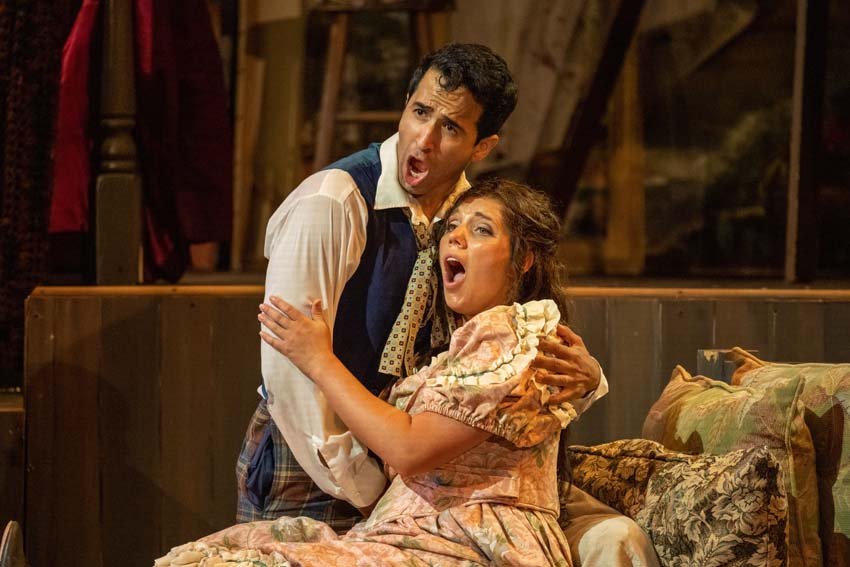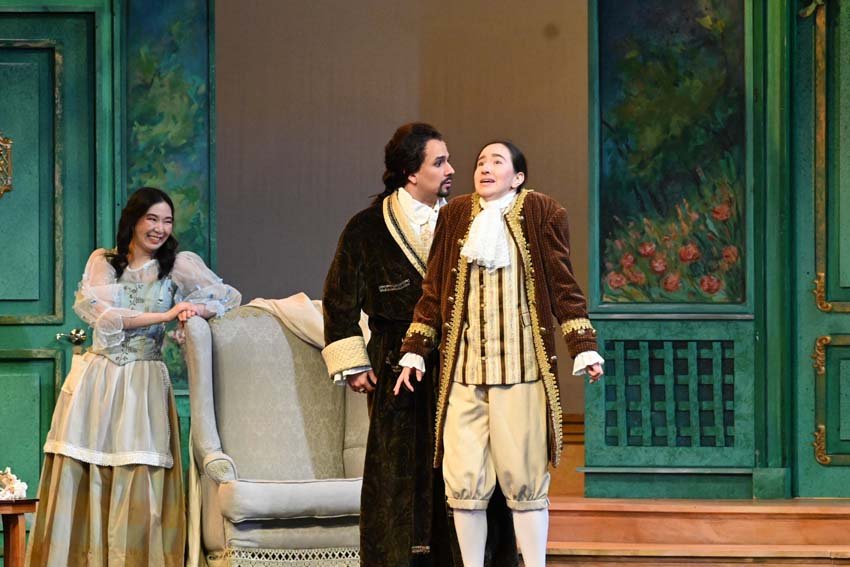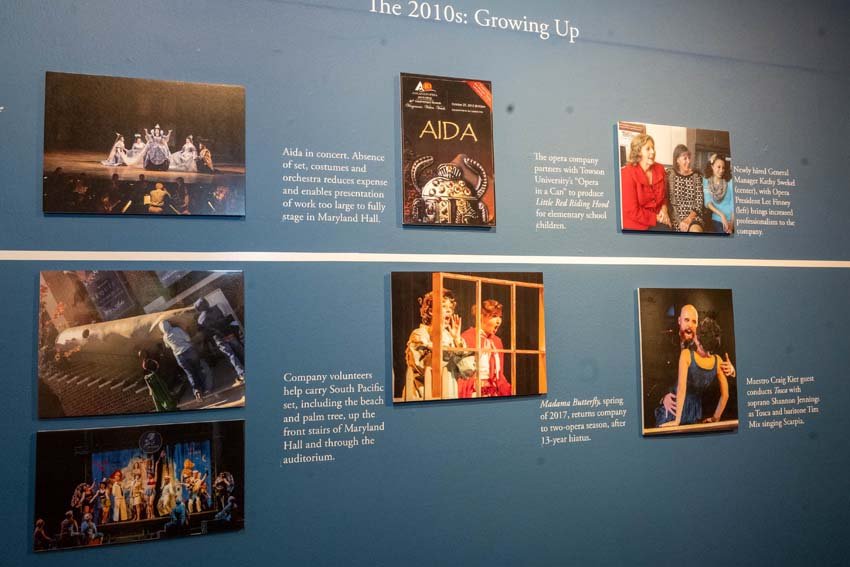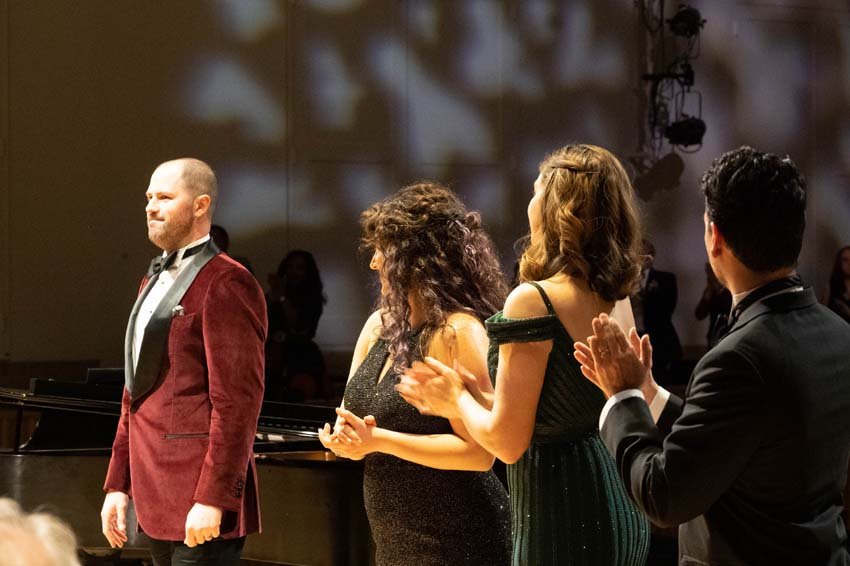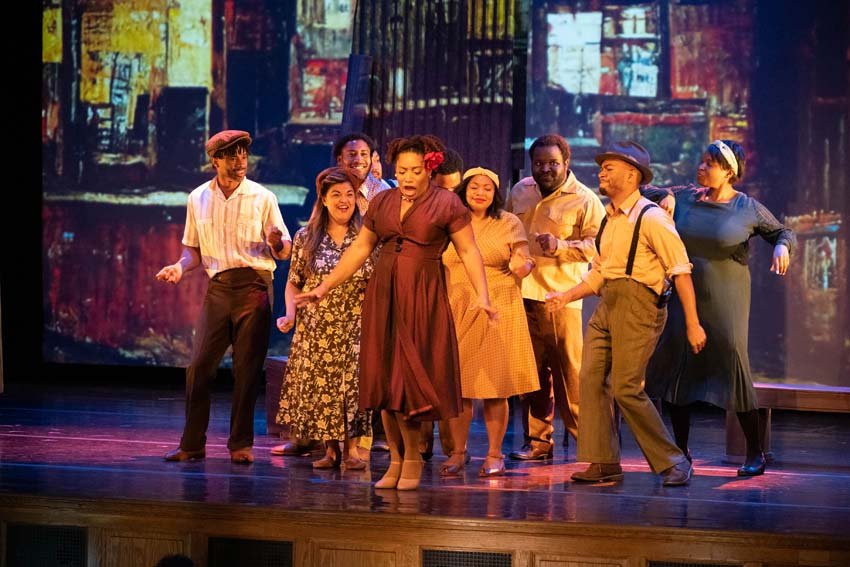+ By Christine Fillat + photography courtesy of Annapolis Opera
The lights dim and the orchestra strikes up the first notes of the opera overture, music that was written in 1786 by Wolfgang Amadeus Mozart. The Marriage of Figaro was controversial in its time. It was banned in Vienna due to its scandalous content: aristocrats hanging out with servants, noblemen seducing servants, women outsmarting men, female servants outsmarting everyone. Politically, the scene was being set for the French Revolution and the demise of the ruling class. This opera rounds out the Annapolis Opera’s 2022–2023 season, which celebrates its 50th anniversary: no small feat. Fifty years is an impressive longevity for any opera company, let alone one in a place as small and quaint as Annapolis. What contributes to such success is a devoted opera-loving community and a stellar cast of principals.
Opera as we know it today was created sometime in early seventeenth-century Italy, with collaboration between the storytellers and the composer. Le opera is the Italian term for “the work.” Opera is multimedia, involving singing, music, dance, and visuals. “That’s why we’re the most expensive art form,” says Kathy Swekel, Annapolis Opera’s general director. “Our specialty is what we call ‘emerging arts professionals,”’ she says. “We try to engage in every aspect of what we’re doing—singers, technicians, designers, and administrators, who are professionals, who have come through their training programs but are still in the process of honing that craft. And it takes 20 to 30 years. This is not like you do your job for five years and you’re an expert. This is a lifetime’s work.”
While the Annapolis Symphony Orchestra provides the musical accompaniment, singers are auditioned for the vocal parts. Vocalists travel from all over the country and sometimes from other countries to perform here. This is just one of the components that contributes to the stellar quality of the Annapolis Opera. Ensuring that each opera is presented at the highest level possible is the responsibility of the artistic director and conductor Craig Kier.
Kier’s tenure at the Annapolis Opera began in July 2020, the first summer of the COVID-19 pandemic (Kier is also the director of the Maryland Opera Studio at the University of Maryland). The pandemic was a particular challenge for the Annapolis Opera. “This very art form became dangerous because no one could sing. Who thought singing would be dangerous?” says Keir. “I brought forth a lot of ideas during the pandemic because I did not have a regular season. There was no protocol, it was not regular times.” He posted content from his home in Philadelphia as a way for Annapolis patrons to get to know him. The company held a virtual gala. “There were never-ending conversations of what’s possible, what’s not possible, what is our audience going to want, how can we connect with the audience, how can we make an influence,” says Kier. “We could have closed our door and done nothing.” In October 2020, the company recorded a program, all socially distanced, to honor the outgoing artistic director, Ronald J. Gretz, who retired in June 2020, after serving as maestro for 37 years; he wasn’t able to conduct his final production.
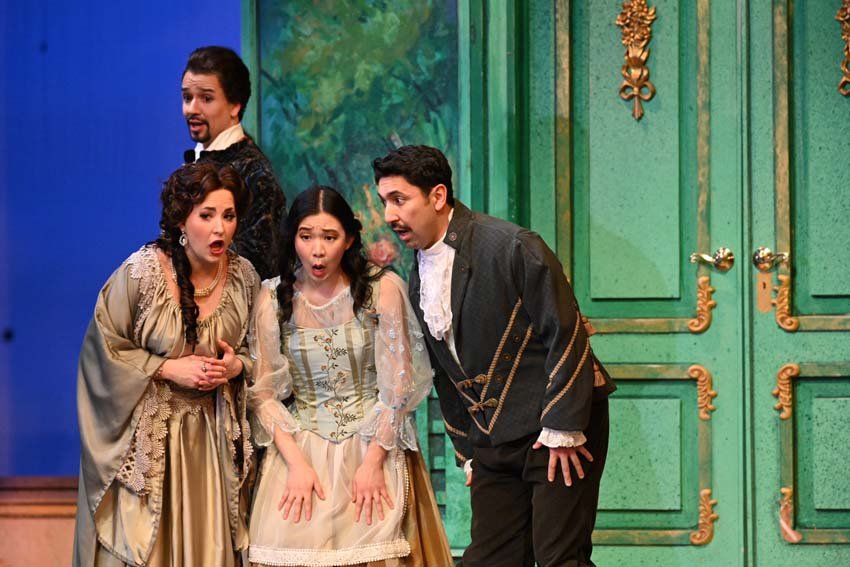
In the spring of 2021, the company produced George Frideric Handel’s Acis and Galatea, with the vocalists filmed alfresco in various Annapolis locations and the orchestra recorded separately. Patrons could purchase tickets and watch the filmed opera remotely, over the internet.
The Annapolis Opera is proud of the fact that every artist who was hired pre-pandemic to perform was paid, despite that live performances were not possible.
In January 2022, the Annapolis Opera was set to open Giacomo Puccini’s La bohème. The company only made it to dress rehearsal when fears of another COVID-19 resurgence caused yet another shutdown. The film crew was brought in again. Using the waterfront home of opera patrons Laurie and Louis Berman, a film was made of distinctive ensemble pieces, duets, and arias from the opera. The vocalists were dressed in contemporary clothing and moved about the stately home, accompanied simply by a grand piano. The video served as a teaser of coming events: “Coming in August! La bohème!”
The production was finally performed live in August 2022 to sold-out audiences. Kier conducted his first live performance with the Annapolis Opera after working there for three years.
Swekel recognizes the value of using technology to bolster the company’s offerings to the public. “We are looking into what we are doing, going into next season, that we will be able to be put on our website, such as our free lectures. We don’t want to monetize everything that we put online,” she says. “[H]owever, we would like that we could film what we do that we offer for free, and that could be easily accessed through our website . . . . We learned a lot from having to film, the two years before, that we can apply to hopefully spreading a little more information.”
Swekel foresees longevity for the Annapolis Opera. “This is an always ever-evolving art. Painting didn’t stay static. We’re not all painting like Michelangelo. Sculpting didn’t stay static. Singing doesn’t stay static, music doesn’t stay static, opera will not be static,” she says. “It will continue to grow and change. I believe it will still be here 50 years from now. I do have faith that the performing arts—and I do include all of them because opera does include all of them—I know it will continue, because all of them will continue.” █
